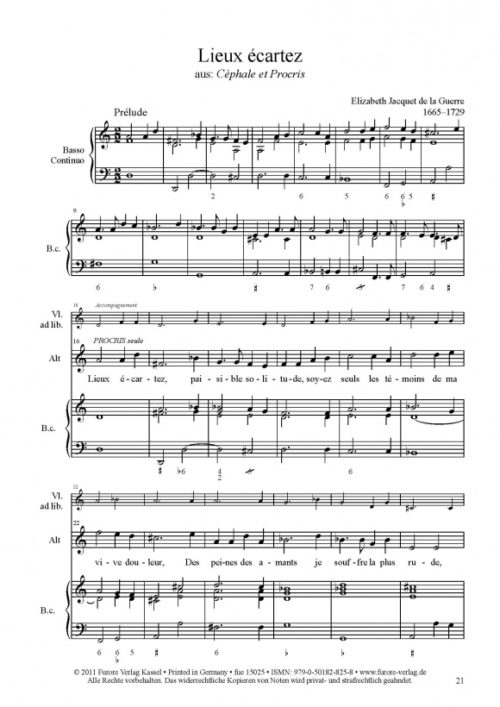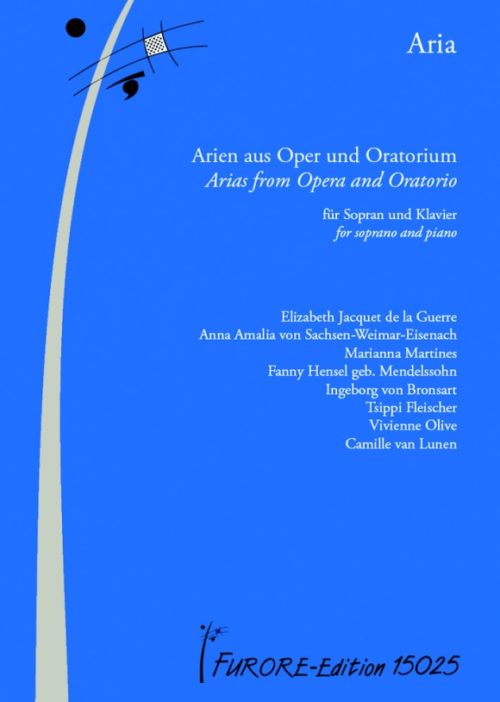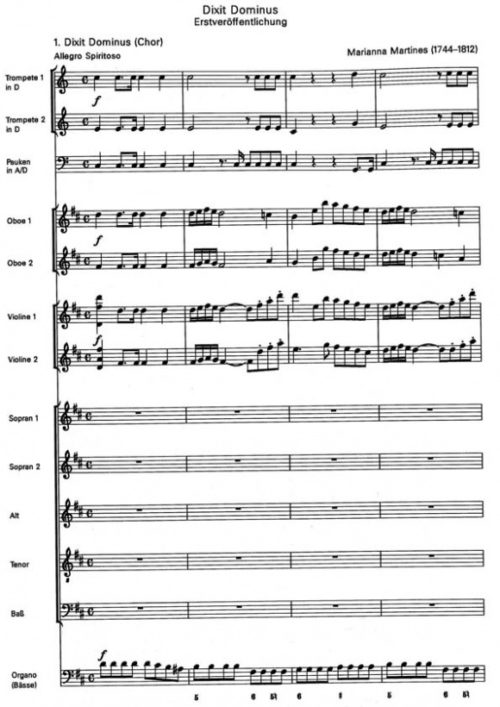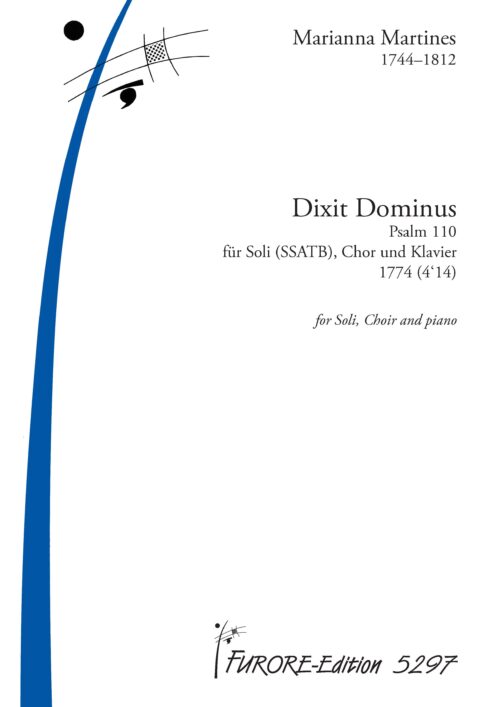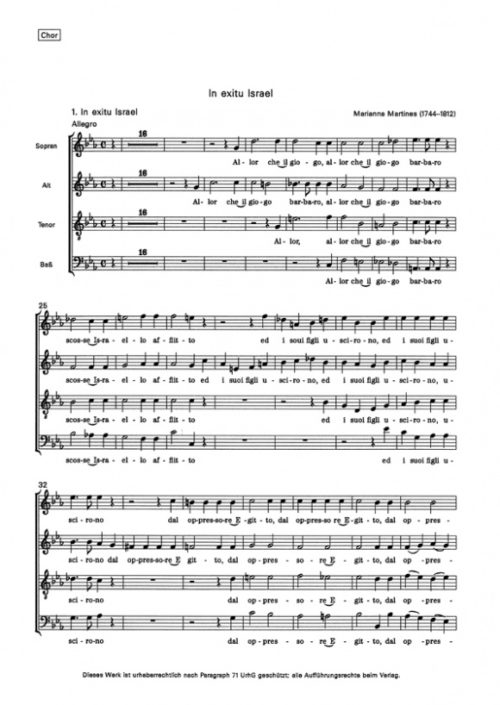Marianna Martines, sometimes referred to as Maria Anna or Anna Katharina, her baptismal name, was born in Vienna in 1744, the daughter of Nicolò Martines (also spelled Martinez), a Neapolitan of Spanish descent, knighted by the Empress Maria Theresia and serving as a master of ceremonies to the papal nuncio. His privileged social position in the Viennese diplomatic circles enabled him to procure the best possible instruction for his daughter. Her education was supervised by Pietro Metastasio, the court poet and famous librettist who occupied an apartment in the Martines house. From him the young Marianna learned languages, literature and music. Beginning in 1753 Metastasio arranged for Marianna to be taught singing, piano, theory and composition. She had voice lessons with Nicolò Porpora, keyboard and theory with Haydn (who at the time was also living in the Martines house), and advanced composition with Giuseppe Bonno and Johann Adolf Hasse. Marianna was admired for her talents as a pianist, singer, and composer at an early age.
In 1772 Charles Burney passed through Vienna in one of his musical tours and reported:
„After the high encomiums bestowed by the Abate Taruffi on the talents of this young lady, I was very desirous of hearing and conversing with her; and Metastasio was soon so obliging as to propose her sitting down to the harpsichord, which she immediately did, in a graceful manner, without the parade of diffidence, or the trouble of importunity. Her performance indeed surpassed all that I had been made to expect. She sung two arias of her own composition, to words of Metastasio, which she accompanied on the harpsichord, in a very judicious and masterly manner; and in playing the ritornels, I could discover a very brilliant finger. The airs were well written, in a modern style; but neither common, nor unnaturally new. The words were well set, the melody simple, and great room was left for expression and embellishment; but her voice and manner of singing, both delighted and astonished me! …
After these two songs she played a very difficult lesson of her own composition, on the harpsichord, with great rapidity and an precision.“
And a few days later Burney wrote: „Mademoiselle Martinez was at her musical studies, and writing; she directly complied with my request, of sitting down to the harpsichord … and then played me a very pretty harpsichord „sonata“ of her own, which was spirited, and full of brillant passages.“ After Metastasios death in 1782, Marianna used part of the large fortune she inherited from him to hold elaborate musical soirées in her home. She appeared as a singer and pianist, even playing piano duets with Mozart. These weekly musical evenings played an important role in the artistic life of Vienna. In the 1790’s she also invested money in her own singing school as a way to encourage young women to study music.
Marianna Martines left a large body of works in many different genres. Her vocal output includes masses, an oratorio, motets, litanies, psalms, cantatas and arias. These were all written in either Latin or Italian, many on texts by Metastasio. She wrote fewer instrumental works, but these do encompass a symphony, an orchestral ouverture, at least three piano concertos, and sonatas for the harpsichord or fortepiano, of which only three have survived. All of her compositions were strongly influenced by the Italian melodic style.
Although she is practically unknown today, Marianna enjoyed considerable recognition in her lifetime. In addition to the praise she received from such notables as Dr. Burney, she was admitted into two musical societies which honoured her talents as a performer and composer: the Accademia Filarmonica of Bologna and the Viennese Tonkünstler-Societät. Unfortunately only two short works were published during her lifetime; her keyboard sonatas in E Major and A Major appeared in an anthology in Nuremberg between 1756–1765.




